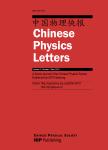Fano Factor in Strained Graphene Nanoribbon Nanodevices
Fano Factor in Strained Graphene Nanoribbon Nanodevices作者机构:Faculty of EngineeringBenha UniversityBenhaEgypt Faculty of EngineeringAinShams UniversityCairoEgypt
出 版 物:《Chinese Physics Letters》 (中国物理快报(英文版))
年 卷 期:2017年第34卷第11期
页 面:114-118页
核心收录:
学科分类:081704[工学-应用化学] 07[理学] 08[工学] 0817[工学-化学工程与技术] 070205[理学-凝聚态物理] 080501[工学-材料物理与化学] 0805[工学-材料科学与工程(可授工学、理学学位)] 0703[理学-化学] 0704[理学-天文学] 070301[理学-无机化学] 0702[理学-物理学]
主 题:Fano Factor in Strained Graphene Nanoribbon Nanodevices
摘 要:We investigate the Fano factor in a strained armchair and zigzag graphene nanoribbon nanodevice under the effect of ac field in a wide range of frequencies at different temperatures (10?K–70?K). This nanodevice is modeled as follows: a graphene nanoribbon is connected to two metallic leads. These two metallic leads operate as a source and a drain. The conducting substance is the gate electrode in this three-terminal nanodevice. Another metallic gate is used to govern the electrostatics and the switching of the graphene nanoribbon channel. The substances at the graphene nanoribbon/metal contact are controlled by the back gate. The photon-assisted tunneling probability is deduced by solving the Dirac eigenvalue differential equation in which the Fano factor is expressed in terms of this tunneling probability. The results show that for the investigated nanodevice, the Fano factor decreases as the frequency of the induced ac field increases, while it increases as the temperature increases. In general, the Fano factors for both strained armchair and zigzag graphene nanoribbons are different. This is due to the effect of the uniaxial strain. It is shown that the band structure parameters of graphene nanoribbons at the energy gap, the C–C bond length, the hopping integral, the Fermi energy and the width are modulated by uniaxial strain. This research gives us a promise of the present nanodevice being used for digital nanoelectronics and sensors.



